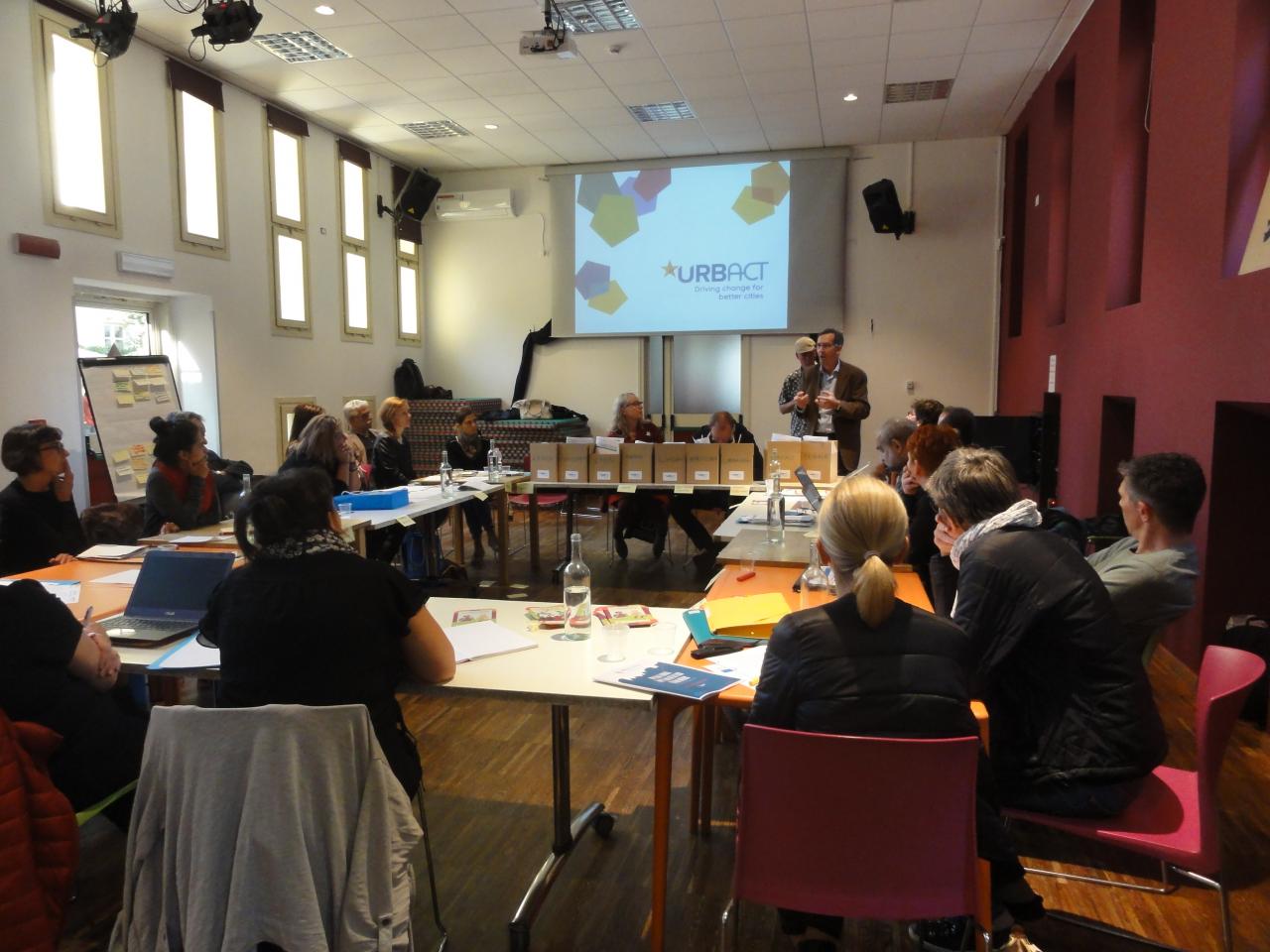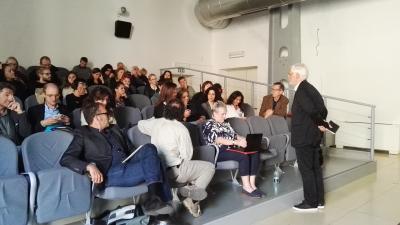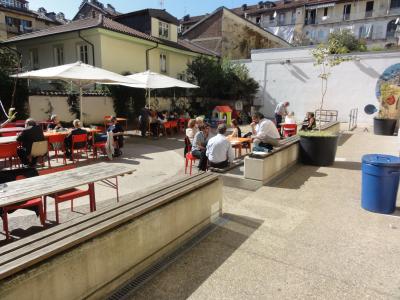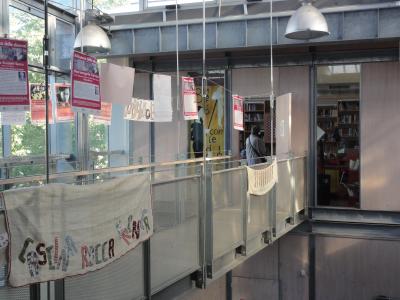The meeting took place in the Conference hall of SiTI, a Research Institute on Territorial Systems, in charge of technical assistance to the City of Turin within the URBinclusion project. Project partners were introduced to the local context by an historical overview of the development of the city from the First Strategic Plan to Social innovation policies. The local team offered then, a short introduction to the main challenges that Turin is facing regarding innovative social policies. Great interest was raised by the presentation of GO-IN, a prototype of a social impact evaluation model applied to Turin Social Factory project, developed by Nomisma and Golder Associates.
The second part of the morning was dedicated to the workshop on “Collaboration, inclusion and cities. A conversation on collaborative services for urban regeneration and social inclusion. What, why and how?”.
The conversation, guided by Ezio Manzini, one of the leading Italian and global design experts for sustainability, was based on those three questions: what do we refer to when we talk of collaborative services and city regeneration? why can collaborative service highly contribute to social inclusion? and how do collaborative services require innovative private-public partnerships? Ezio Manzini introducing the notion of collaborative services and presenting some meaningful examples showing how they can act as agents of urban regeneration. Being based on interaction among actors aiming to get a result, and offering solutions to socially sensitive problems, collaborative organizations can also be considered as services. More precisely: this new kind of social services, involving active and collaborative citizens, can generate values for them and for the whole society. The idea is based on the assumption that with a new kind of public intervention, both public policies and public services should break their business-as-usual modalities and start new ones. This shift is not easy and should be seen as a learning process in which they, and all the other involved actors, should come to understand what it means to be “the Public” in the new context in which collaborative services operate.
Moving from here, Tiziana Ciampolini, senior expert in action research and social economy from Caritas Italia brought other original examples, taken from the Caritas’ worldwide experience, discussing why, given their intrinsic collaborative nature, collaborative services can support the social inclusion. Finally, Vittorio Bianco, expert from the Network “Case del Quartiere”, focused the analysis on innovative coalitions between citizens, public and private organizations, showing how they can permit these inclusive and regenerative services to exist, last in time and spread. The three presentations triggered a lively debate in which a variety of experiences emerged indicating different approaches and sensitivities (in turn related to different cultural and social background). In particular, Peter Ramsden underlined as, in their diversity, these initiatives are in line with the very general URBACT intentions and approach.
Starting from the assumption that collaborative services are themselves generative platforms for new ideas, participant agreed on the need for new tools, organizational models and public policies. In this framework, what emerged as fundamental is the definition of a clear and shared vision. The guidelines proposed to define this vision include some fundamental elements: bridging diversities, creating social commons and opening opportunities to increase participation.
The second part of the meeting was dedicated to analyse and understand local practices of collaborative services in Turin through the visit to two Community Centres (Case del Quartiere) located in the southern part of the City. The first, called “La Casa nel Parco” is a building located in a peripheral park bordered by a road subject to a major urban regeneration intervention in the last few years. The community centre is held by a no profit Foundation, with public contribution. It aims to be a space capable of welcoming and sustaining the relationships in the Mirafiori Sud district and gather the existing local associations, in order to enrich and stimulate the social and cultural fabric of the neighbourhood. The “Cascina Roccafranca” community centre is a space of 2,500 square meters where 3,500 weekly visits of from citizens for meeting, carrying out activities, developing projects and socializing. The City is Founding Member of the Foundation born to manage the centre, whose Participating Members are local associations and informal groups. In one of the beautiful multifunctional spaces of the Centre, the project manager for the Turin Municipality, Giovanni Ferrero, explained that the initiatives is carried out in the framework of Urban Innovative Action “CO-CITY”, aiming to breaking the self-reinforcing circle of poverty, social segregation in deprived neighbourhoods and lack of participation. It achieves this by supporting the development of an innovative, polycentric “commons-based urban welfare” composed of generative communities centred on urban commons, low-cost service co-production, social mixing, and care of public spaces.
The second day of the meeting was held in the community centre of San Salvario, a multicultural neighbourhood located close to the central station of Turin that, since its opening in 2003, plays an important role in bringing citizens together.
After a visit to the structure, the morning was dedicated to an operative workshop led by Peter Ramsden who involved all partners in a collective exercise to train them on how to structure their Operational Implementation Framework. All partners were invited to think about the ongoing projects, to identify success stories and to think about local projects trying to define their baseline position, identify challenges and barriers and think on how to respond to the challenges. All comments about the community centres and a list of strengths and weaknesses was drawn. The main strengths are inclusion, bottom up participation and the answers provided to citizens’ needs, while the conflict management, the financial sustainability, the real involvement of citizens (in particular young adults) and the difficulty in measuring impacts, represents the critical elements. The session concluded with the highlighting of the first common lesson coming from local practices facing the implementation challenges and a synthesis of the local practices of the participating cities.
At the end of the meeting, Peter Ramsden, underlined the importance of engagement as an active dynamic process. For this reason, it is important to engage people in many different ways and he perceived that community centers (Case del Quartiere) opens that possibility, becoming real hubs for community activities enlarging their effects at city level.




